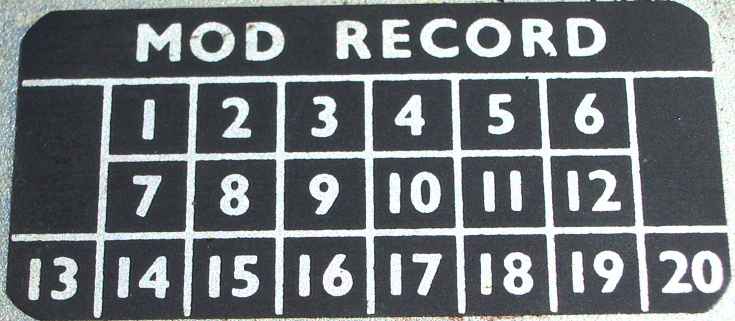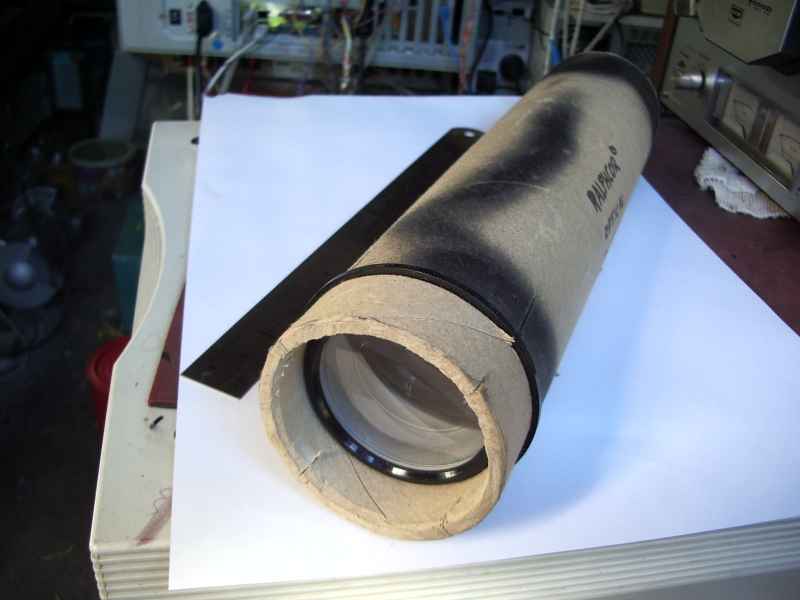The Great Chelsea-Heights Refractor
as installed in the one of the worlds great cardboard observatories
Ralph Klimek 20May 2007
The story of this funny little telescope begins when as a young lad a
played with assorted lenses that came my way. I also viewed the effect
of combining lenses in the hope that just like the legend of that
ancient optician I would stumble across a pair that might actually
function like a telescope. I was allways dissappointed with the result
and eventually my opinion of lenses was determined only by a lenses
ability to set fire to paper by focusing the sun.
I have allways wanted a telescope being slightly interested in whats
out there. However I have not wanted an astronomical scope enough to
actaully want to pay about $2000 AUD for something worth pointing
upwards. Anyway, astronomy is for those that dont mind getting cold.
My simple unscientific observations gathered by playing with assorted
lenses is that image magnifying systems can be made from simple lenses
if the magnification is less than about 5 otherwise the field of view
is too small and the chromatic aberation is unacceptable.
There are numerous sources of secondhand random lenses, all of mine
come from dumpster diving at my place of work. Fine lenses and mediocre
lenses can be found in dead scientific equipment, overhead projectors ,
micro fiche readers, dead projectors...whatever. One day, the
department that deals with AV gear had a cleanup and I inspected their
dumpster ( for compliance with regulations....off course) and
picked out a few trophies for closer inspection. I found a large
mounted lens, with absolutely no markings. The extra reflections
showed that it was a doublet...possibly an achromat, now wouldnt
that be funny. Superb small projection lenses can be obtained
from discarded micro fiche readers with focal lengths of anywhere from
12 to 17 mm which are coated and reasonably achromatic. I
use them as a very fine portable microscope loupe, allways have one on
me now. Yes , I held this mystery lens in front of a micro-fiche
projection lens and much to my surprise the other end of the
campus came nearer, much nearer. Well here it was, after all
these years, the necessary components of my 'scope and the birth of this great cardboard telescope.
Now I wish I had a lathe, I want a lathe, but I dont want a lathe
enough to buy one! So, the housing for my new scope would have to be
made with whatever came to hand. A bit of drain pipe, a cardboard tube
from a dressmaker's roll and some bits of wood and it all came
together and it even looked like a scientific instrument! My
focusing system is a total pain so once focused to infinity there
it stays. And the results, hardly jaw droppiing, as you would
expect, the objective was not meant for astronomy, its focal length is
only 300 mm, way too short. The micro-fiche projection lens was never
meant to be an eyepiece! But it actually worked! The moon looked
like...the moon...only bigger with lots of craters and stuff. The
planets look like small discs, but sadly no detail; it isnt THAT good.
The surprise for me was that pointed heavenwards there were lots
of stars. The orion nebula actually looks like a nebula and fills the
effective field of view. Thats what nice about nebulas. No matter how out of focus, they still look like nebulas!
There was one small improvement that I made. I made a field stop and
put near the focal point of my pretend eyepiece. This removed a lot of
spurious rays and after that the moon actually looked moonlike instead
of a yellow smudge.
As you would expect the field of view is horribly small and chromatic
aberation is not that great either but the crazy thing is that it works
at all. The highlight for me was a watched the last transit of venus
through it through my homemade smoked glass filter. Yes I know, and
promise I wont use it with my remaining good eye! It was a real
thrill to use a scope that I had made to witness a real astronomical
event. I still want a real scope though, perhaps one day I really
will buy one.
The mystery 50MM doublet, no markings, clearly extraterrestrial in origin....
Precision axial alignment is realised with some (precision) 6 gauge wood screws
The Optical Masters at Ralphcor
apply a field stop. This turns the Moon from a yellowish smudge
to an image of The Moon, with craters, mountains and stuff.
The precision masonite and drainpipe eyepiece and fine focusing system
The eyepiece, actually a projection lens from a dead micro-fiche reader
The Great Chelsea-Heights Refractor as built by Ralphcor, an ancient ,noble and mystical order of Random Opticians.
homepage

Fri Oct 1 18:19:21 EST 2010 fixed formatting, email sig


